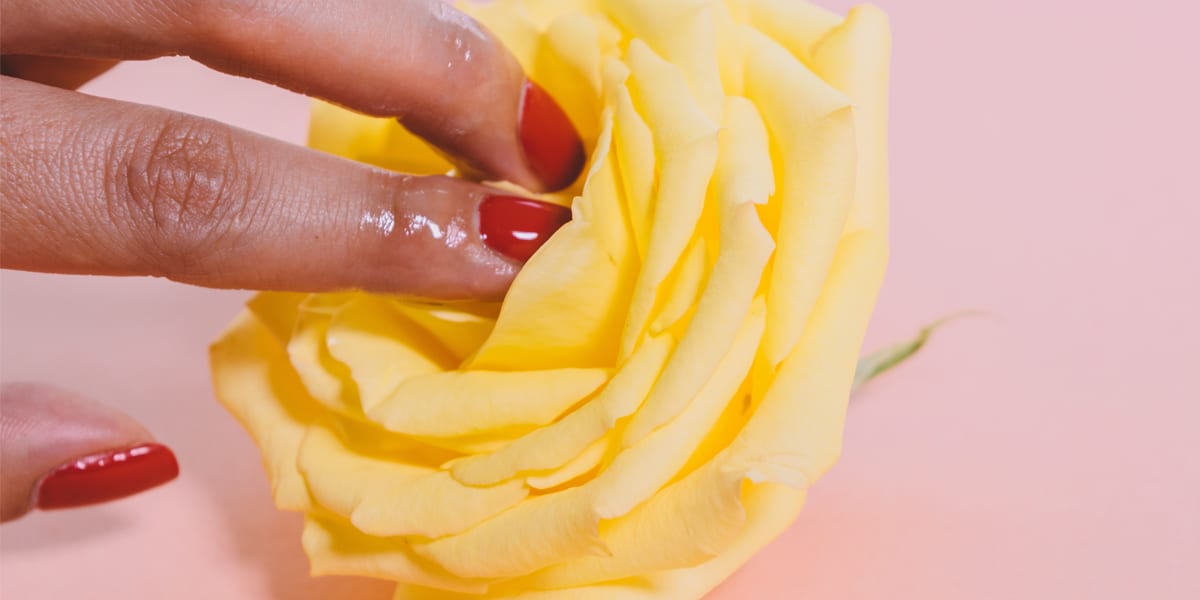Where exactly are my ovaries? (and other basic anatomy sex ed didn't teach us)

When I was a teenager, I thought my boobs were broken. Having only ever seen nipples on TV and in the movies, I thought they were always meant to be erect — mine, on the other hand, were sometimes erect and sometimes not, so I spent many years hiding my monstrosities when in green rooms or locker rooms, determined to keep my freak-boobs from the world.
Now, I laugh at it — but at the time, the deep-rooted misunderstanding of my body caused me so much angst. And I’m not alone. For so many of us, the sex education we get is woefully lacking, leaving us without a basic, working understanding of our own anatomy.
And nowhere is this more clear than with cis female genitals. Considering how many euphemisms we have for our basic body parts — and how many adult women would rather say “noni” or “hoo-ha” than utter the words vagina or vulva — it’s clear that, as a society, we haven’t quite settled down with our genitalia. At best, many people are uncomfortable and, at worst, they don’t have any idea what’s going on downstairs.
If you’re one of the lucky ones with a total working understanding of your body parts, then that’s awesome — you have nothing to worry about. But there’s no shame if you weren’t given that kind of education- a lot of us weren’t. So here’s a crash-course in cis female genitalia that you should have gotten in sex ed — because some of us missed way the hell out.

Vulva vs. Vagina
OK, so you may have been saying this wrong — that’s alright. There have been some very public debates about what to call certain parts of female genitals. You’ve probably been calling it your vagina, when what you may actually be referring to is your vulva.
“The vagina is an elastic, muscular canal with a soft, flexible lining that provides lubrication and sensation,” Web MD explains. “The vagina connects the uterus to the outside world.”
The basic rule of thumb is that your vagina is inner and the vulva refers to your outer genitalia, including your labia (minora and majora), your clitoris, and your urethra opening — AKA where you pee from.
Of course, if you want to keep saying “vagina”, I’m not going to correct you — it’s your body, you can call it what you want. But for some, the distinction is really important, so it helps to be in the know.

The internal structure
What goes on inside is a lot more complicated than just your vaginal canal, though your vagina is where a lot of the action happens. Not only is it what fingers, penises, and sex toys go into, it’s also where tampons and menstrual cups land — and where your period blood comes out of. Oh, and it is indeed where babies come from.
But going further in, you run into the cervix, which connects the vagina to the uterus — which is why it expands during childbirth — then, the uterus itself.
When you refer to your “womb” you’re probably thinking of your uterus, because that’s where a fetus grows if you're pregnant. Planned Parenthood describes it as “a pear-shaped muscular organ about the size of a small fist”, if you want an idea of what it looks like. And yes, it does sound a little terrifying when you put it like that.
Of course, for a baby to happen, you have to start with eggs. Eggs are stored in your ovaries, which are connected to your uterus by your fallopian tubes — if you’ve ever looked at an anatomical diagram, you probably have seen the loops that seem to stick out on either side of your uterus. This is the general area that I tend to scream at in anger when I have period cramps, but to no avail.

The not so elusive clitoris (and other fun zones)
Although the clitoris was already covered in the vulva section, I think it deserves its own mention — because female pleasure areas are far too often ignored. There’s a ridiculous idea that the clitoris is hard to find and even this diagram from Web MD doesn’t have a clitoris in sight. The clitoris, right near the top of your vulva, is very, very much there. There’s also the G-spot (which is somewhat debated), thought to be a few inches inside your vagina, a rough area that you can access by inserting fingers and making a “come hither” motion.
And that’s not all — there’s also the Bartholin’s glands near the vaginal opening, which produce lubrication when you’re turned on — and Skene's glands, sometimes called female prostate glands, which are located near the urethra and thought to be responsible for female ejaculation. I certainly didn’t learn about these in school.
There’s no doubt that there’s a lot going on in the female genital department — and this is just a quick crash-course, something we all should have gotten many years ago. But examining with a hand mirror can only do so much to replace actual anatomical education — and, in this case, knowledge is definitely power and empowering. Sometimes, we have to take steps to educate ourselves, but we all deserve a basic understanding of our own bodies.




